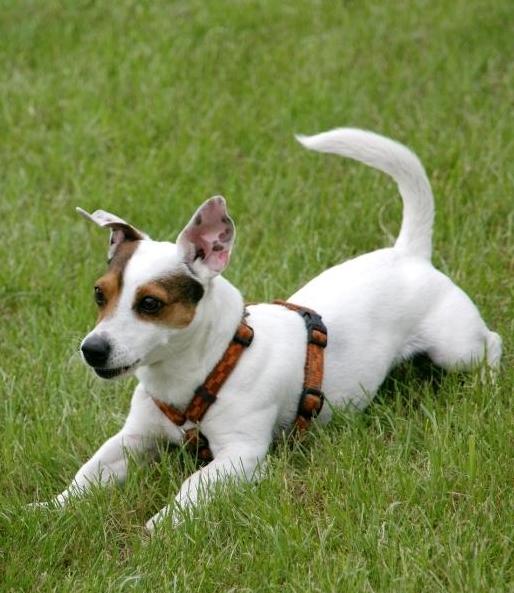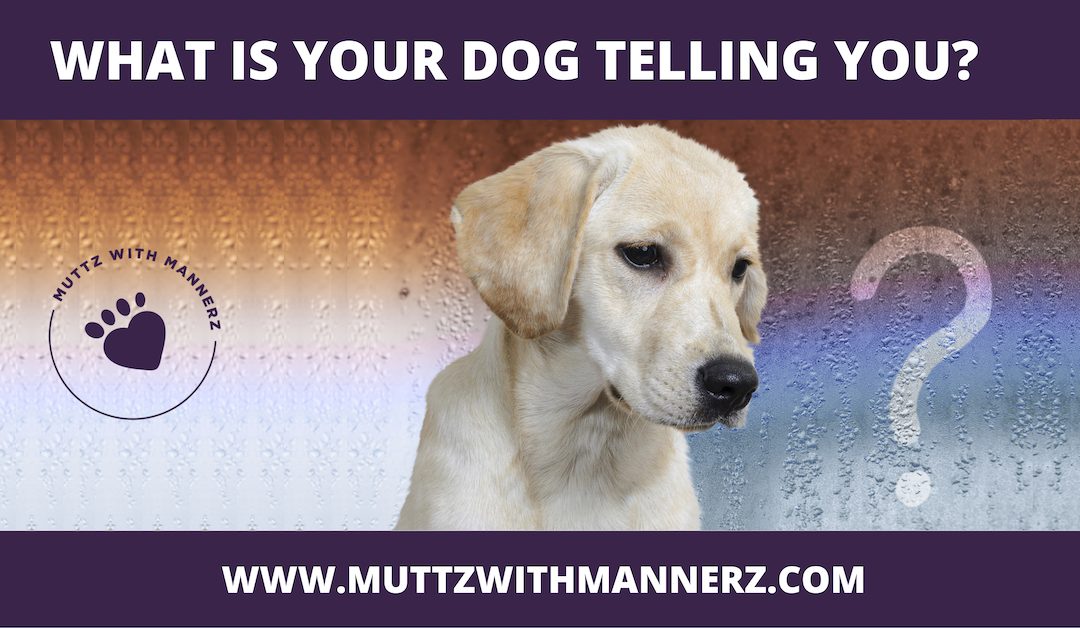Do you ever wonder if your dog trying to tell you something or what they are thinking? Would you love to have a conversation with them?
Knowing what they are saying is not easy, but you can learn how to better understand them by reading their body language.
Some key points to be aware of when trying to understand your dog are:
- Your dog’s body language provides you with valuable information.
- Dogs use posture, movement, and facial expressions to show how they are feeling.
- Being a responsible dog owner includes understanding what dog language means.
Dog language includes barks, whines, and growls, but they also use nonverbal cues. When humans understand a dog’s body language and these cues, they can get a better idea of the emotions they are feeling or their intentions and actions displayed.
Here are some things that you can look for that can help you understand them better.
Eyes can tell a lot.
The intensity of a dog’s gaze and the whites of their eyes, that are visible, can give you valuable information. When a dog feels tense or uncomfortable, their eyes may appear rounder than normal, or they may show a lot of white around the outside. If their pupils are dilated this can also be a sign of fear or arousal – meaning that they feel threatened, stressed, or frightened.
 A relaxed dog will often squint so that their eyes become almond-shaped with no white showing at all.
A relaxed dog will often squint so that their eyes become almond-shaped with no white showing at all.
Eye contact also tells us something. A hard stare can signal aggression, where looking away is a dog wanting to calm a situation. It is always best not to stare at a dog as they may take it as a threat or challenge.
Ears do more than hear.
A dog’s ear position gives you an idea if they are relaxed or aroused. When your dog is relaxed, their ears may be slightly back or out to the sides. As they become more aroused, their ears will move forward, pointing towards what they are interested in.
A dog with erect ears, like a German Shepherd, may be easier to read than a dog with floppy ears like a Basset hound. A tip is to observe the base of their ears and the direction they are pointing to look for these different emotions.
Did you know a dog can smile?
Have you seen a growling dog? It’s a warning, but before the growl they display a physical aggression warning which may look like a wrinkle at the top of their muzzle, usually pulling their lips up vertically to display their teeth. This warning often comes with a tense forehead and hard eyes.
 Showing teeth doesn’t always mean aggression. Look for other signs. If a dog shows a grin or smiles with a lowered head, wagging tail, flattened ears, a relaxed body posture, or soft, squinty eyes it would show a different state.
Showing teeth doesn’t always mean aggression. Look for other signs. If a dog shows a grin or smiles with a lowered head, wagging tail, flattened ears, a relaxed body posture, or soft, squinty eyes it would show a different state.
When your dog is relaxed, they will likely have their mouth open, or may be panting with no tension in their face.When dogs are fearful, they will generally have their mouth closed, and may pull their lips back at the corners. A stressed dog may also pant and suddenly close their mouth.
Yawning and lip licking may be a sign of stress, not tiredness, particularly when accompanied by a tight mouth and often a whining sound.
A waggy tail does not always mean a happy dog.
To most people tail wagging seems like an easy signal. Your dog is happy, right? Not so. It simply means your dog is emotionally aroused. Aroused could mean excitement, frustration, or worse – potential aggression.
When you are looking at your dog’s tail there are two things you need to see: the position of the tail and how the tail is moving.
When your dog is relaxed it will hold its tail in a neutral position. This means the tail extends out from the spine or hangs below. The tail movement may be a loose wag from side to side or a sweeping circular motion.
As your dog becomes more excited or aroused, their tail will usually rise above spine level. They may also move their tail side to side in short, rapid movements.
A fearful dog will tuck their tail between their rear legs. The tail may also be held rigid against the belly.
How do dogs release stress?
Dogs release sweat when they are hot and also when they are stressed. They release sweat through panting and their paw pads. If they are stressed or overheating, you may notice that they leave wet footprints on the floor.
None of your dog’s body parts work alone. Like us, there could be a number of them working together. So, when you are observing your dog look at every signal from the tail height to the eye shape.
Does your dog want to play?
 When your dog wants to play, they usually play bow and exaggerate their facial and body movements. A playful dog’s body will be loose and wiggly, with brief pauses during play.
When your dog wants to play, they usually play bow and exaggerate their facial and body movements. A playful dog’s body will be loose and wiggly, with brief pauses during play.
Playtime is over when your dog seems stiff, moves slowly, or keeps moving away, and is not interested in social interaction. Looking away, sniffing, scratching, lying down, or other avoidance behaviors may also indicate that the play session is over.
A dog who doesn’t want to play may express fear or aggression.
Fear can be seen if they lean away, lean back, tremble, crouch, lower their body or head, or roll onto their side or back. Along with this, their eyes will often be fully open with large pupils, their forehead will be wrinkled, and their tail will be lowered or tucked. With extreme fear, they may freeze completely or frantically try to escape, and they may urinate or defecate when approached.
A dog displaying aggression will look large, standing with their head raised above their shoulders. Their body will be tense, with their weight either centered or on all fours or leaning slightly forward onto their front legs.
Remember that your dog is “talking” to you all the time.
If you learn what your dog is saying, you will develop a deeper bond of trust and respect. Plus, your newfound understanding of their emotional state will help you predict your dog’s emotions and behavior. It can prevent problems and relieve your dog’s stress.
If you would like some visual examples this link in Modern Dog Magazine by Dr. Stanley Coren is a great resource.
We can helpyou understand your dog’s language and nonverbal ques! At Muttz with Mannerz Canine Academy we offer group and personal training programs and other educational opportunities for dog owners. Please contact us at info@muttzwithmannerz.com or visit our website at www.muttzwithmannerz.com.
Tune into our podcast next month for more on understanding dog language with Corey McCusker, Canine Coach and Diane Purser, Canine Education.

